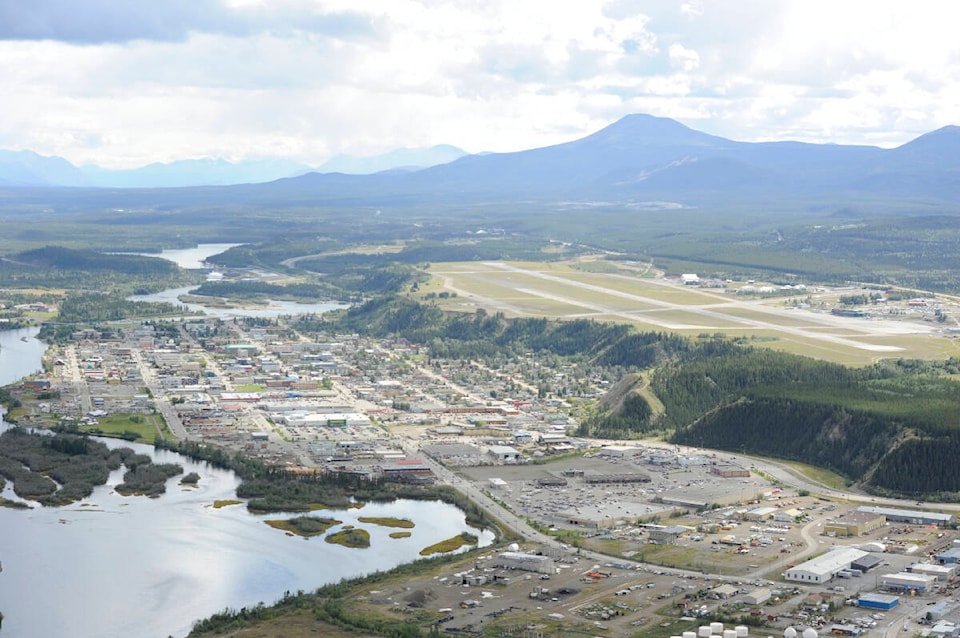I don’t mean living in the airport terminal, like Karimi Nasseri who lived for 18 years in Charles de Gaulle Airport in Paris. He was caught in a bureaucratic Catch-22 over visas and reportedly spent his time writing in his journal, reading airport magazines and studying economics.
I’m talking about moving the airport and putting houses where the runway is today. This idea, suggested by a Yukonomist source, is not as wild as it sounds. The Yukon government has announced plans to spend $140 to 160 million (plus the usual cost overruns) upgrading the airport over the next few years, so it’s a good time to invest a few minutes doing the math to see whether spending the money on a new airport somewhere else makes sense.
Especially since the new location of the airport could be out the Long Lake road just a short whiff away from the sewage lagoons. Once Whistlebend and South Copper Ridge are full of people, having the airport out there might be better than building a new subdivision called Fragrant Acres.
Our sprawling city has a housing shortage, so a new neighbourhood on flat former airport land right beside downtown would be handy.
Berlin just did something similar, closing Tegel Airport near central Berlin and building a new one 18 kilometres outside the city at Schönefeld.
Our airport is actually quite large. Yukon Lands Viewer says it, plus some of the land between the airport fence and the South Access Road, amount to over three million square metres.
If you applied downtown Toronto’s target density of 400 people and jobs per hectare to that area, you could fit over 120,000 residents.
But it would be inhumane to make Yukoners live like Torontonians.
If we used the estimated density of the residential areas of Whistlebend Future Areas A, B and C from their YESAB submission, you could cram over 30,000 people on the airport lands.
In real life, you would add parks and space for schools and other amenities. If you use the total density for Whistlebend Future Areas A, B and C plus Whistlebend Town Square, you could still house over 10,000 Yukoners on the airport lands. And that might be an underestimate. The area is close to the amenities of downtown, allowing more land dedicated to housing.
When my great-uncle was a teenager and worked at Pan Am Airways, whose facilities were on the escarpment side of the runway, he used to run downtown for lunch.
This idea would create a dense, walkable city with a central park formed by the escarpment running down the middle between downtown and the airport lands. This is an attractive long-term vision compared to putting thousands of homes a long car commute away in places like the sewage lagoons or even farther into the Whitehorse hinterland.
However, it is quite difficult to do a business case. For example, how do you value the time savings and health benefits of a person living at YXY who has a 10-minute walk to work downtown versus a Fragrant Acres resident who sits in traffic for 20-30 minutes on their commute? What is the value of their time now and in a hundred years? What is the relative value of a lot where the runway is now versus one at Fragrant Acres? Should we invest millions moving the airport now, with our money (well, Ottawa’s money), when the benefits will accrue to our grandchildren over the next century?
Future Yukoners probably won’t even bother to think that their short commute and groovy Northern scooter lifestyle are thanks to our visionary leadership today.
One way to finance the move would be to capture some of the value of central living from the future residents of YXY. You would charge a premium for the lots today, and also put on a 100 year extra property tax that would pay off the bonds issued today to build the new airport.
There is actually quite a bit of money on the table. Suppose you could capture $25,000 or $250 per resident per year in today’s money over the next century from a higher fee per lot or the airport property tax scheme. That adds up to $250 million for 10,000 residents. This is a large potential contribution to the new airport costs and compensation for Yukon airport businesses for the move.
The Kwanlin Dün First Nation and Ta’an Kwäch’än Council both have settlement land north of Long Lake. This opens the opportunity for lucrative long-term lease revenue from the airport and surrounding businesses. The Iqaluit airport is a public-private partnership, and something similar could be done allowing First Nations and other Yukon investors to finance the facility.
Currently the government plan is to spend $140 to 160 million on YXY upgrades and capture approximately $0 from the public or investors to defray the costs.
Of course, a rigorous business case would be required, airport safety experts might not approve, and unprecedented cooperation between our four levels of government would need to occur.
Nonetheless, I hope someone in government is looking into the idea before the $140 to $160 million tender goes out. In any case, I’m going to ask the Yukon News to put this column in the archive so future residents of Fragrant Acres can have their robocar read it to them to pass the time as they are stuck in traffic on the commute to downtown.
Keith Halliday is a Yukon economist, author of the Aurore of the Yukon youth adventure novels and co-host of the Klondike Gold Rush History podcast. He won the 2022 Canadian Community Newspaper Award for Outstanding Columnist.
